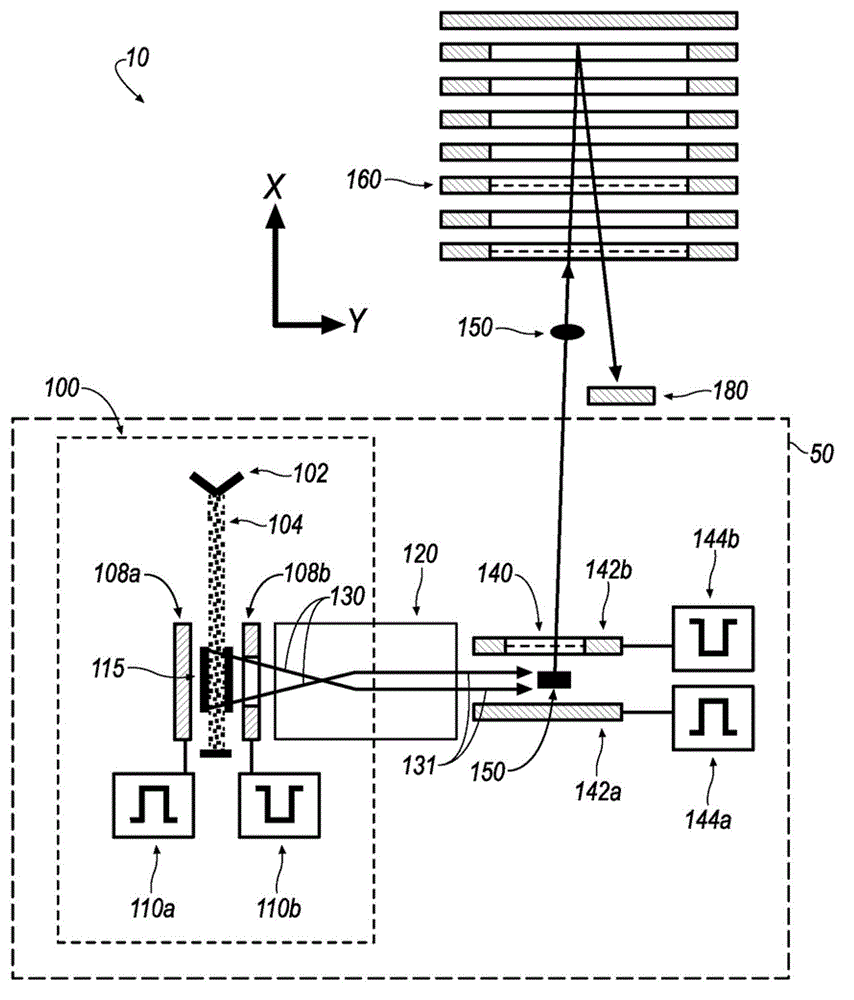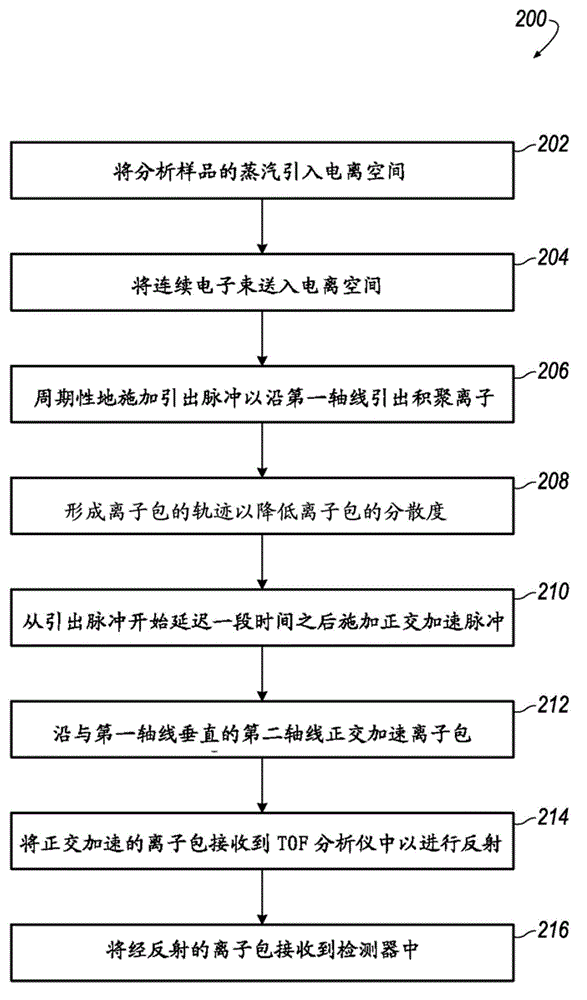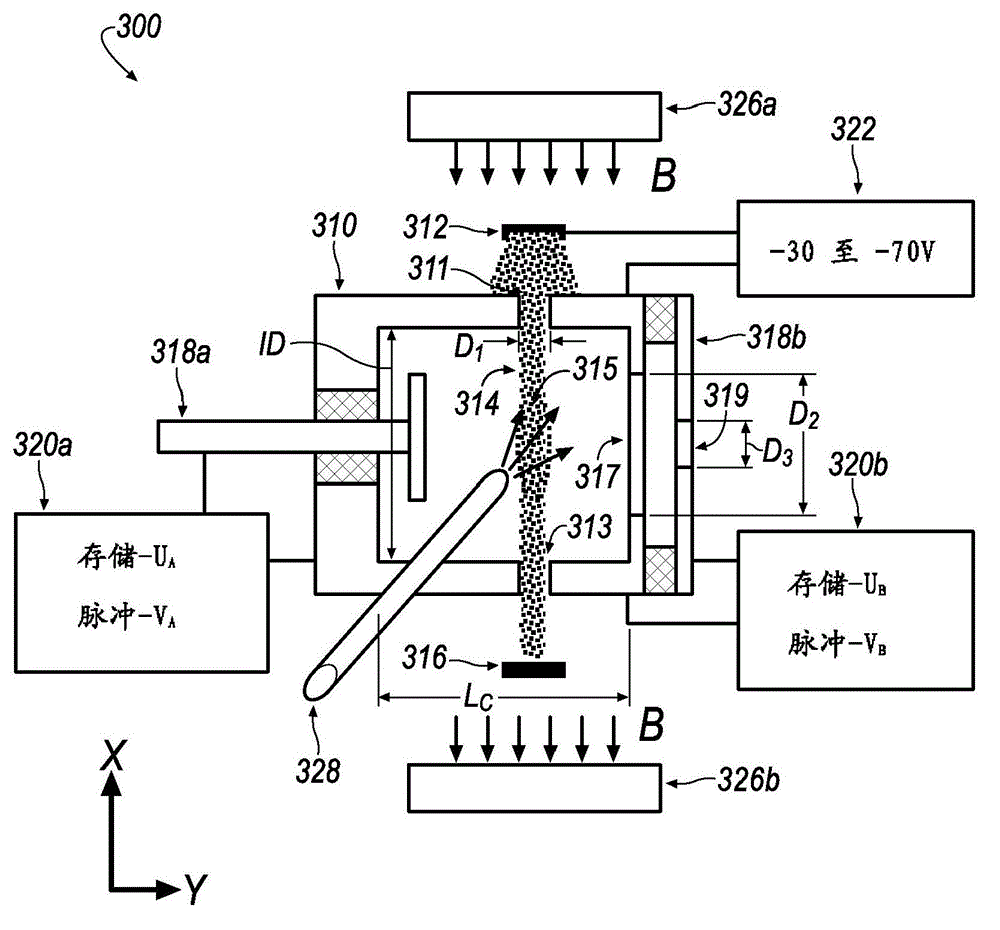Time-of-flight mass spectrometer with accumulating electron impact ion source
A technology of time-of-flight mass spectrometry and time-of-flight, which is applied to time-of-flight spectrometers, mass spectrometers, ion sources/guns, etc., and can solve the problems of distorted fragment intensity ratio and slow spectrum acquisition.
- Summary
- Abstract
- Description
- Claims
- Application Information
AI Technical Summary
Problems solved by technology
Method used
Image
Examples
Embodiment Construction
[0022] figure 1 A schematic diagram of an exemplary time-of-flight (TOF) mass spectrometer system 10 employing orthogonal acceleration combined with ion accumulation within an electron impact (EI) ionization source is provided. TOF mass spectrometer system 10 includes accumulated electron impact ion source assembly 50 in communication with ion mirror 160 and detector 180 . Accumulated electron impact ion source assembly 50 includes accumulated ion source 100 in communication with ion transfer optics 120 and orthogonal accelerator 140 . Accumulated ion source 100 defines a first X-axis and a second Y-axis perpendicular to the X-axis. In some embodiments, accumulated ion source 100 includes an electron emitter 102 (eg, a thermal emitter) that delivers a continuous beam of electrons 104 into an ionization space 115 defined between first and second electrodes 108a and 108b, the The first and second electrodes are connected to respective first and second pulse generators 110a, 11...
PUM
 Login to View More
Login to View More Abstract
Description
Claims
Application Information
 Login to View More
Login to View More - R&D
- Intellectual Property
- Life Sciences
- Materials
- Tech Scout
- Unparalleled Data Quality
- Higher Quality Content
- 60% Fewer Hallucinations
Browse by: Latest US Patents, China's latest patents, Technical Efficacy Thesaurus, Application Domain, Technology Topic, Popular Technical Reports.
© 2025 PatSnap. All rights reserved.Legal|Privacy policy|Modern Slavery Act Transparency Statement|Sitemap|About US| Contact US: help@patsnap.com



